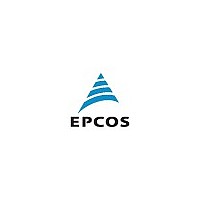B64290-A38-X830 EPCOS Inc, B64290-A38-X830 Datasheet - Page 5

B64290-A38-X830
Manufacturer Part Number
B64290-A38-X830
Description
Manufacturer
EPCOS Inc
Datasheet
1.B64290-A38-X830.pdf
(14 pages)
Specifications of B64290-A38-X830
Lead Free Status / RoHS Status
Compliant
Ring Cores
Application: Ring cores to suppress line interference
With the ever-increasing use of electrical and electronic equipment, it becomes increasingly impor-
tant to be able to ensure that all facilities will operate simultaneously in the context of electromag-
netic compatibility (EMC) without interfering with each others’ respective functions. The EMC legis-
lation which came into force at the beginning of 1996 applies to all electrical and electronic products
marketed in the EU, both new and existing ones. So the latter may have to be modified so that they
are neither susceptible to electromagnetic interference, nor emit spurious radiation. Ferrite cores
are ideally suited for this purpose since they are able to suppress interference over a wide frequen-
cy range.
At frequencies above 1 MHz, ferrite rings slipped over a conductor lead to an increase in the imped-
ance of this conductor. The real component of this impedance absorbs the interference energy.
A ferrite material´s suitability for suppressing interference within a specific frequency spectrum de-
pends on its magnetic properties, which vary with frequency. Before the right material can be se-
lected, the impedance lZl must be known as a function of frequency.
The curve of impedance as a function frequency is characterized by the sharp increase in loss at
resonance frequency.
Measurement results:
The measurements shown here were made at room temperature (23
3 °C) using an HP 4191A
RF impedance analyzer with a flux density of B 1 mT.
The maximum of the impedance curve shifts to lower frequencies as the number of turns increases;
this is due to the capacitive effect of the turns (figure 1, using R25/15 as an example).
Figure 1
For direct comparison of the typical suppression characteristics of differenct ferrite materials, the
2
impedance curves were normalized using the equation l Z l
= l Z l / N
x
( l
/ A
); the geometry
n
e
e
factor was calculated on the basis of the core dimensions (figure 2).
These normalized impedance curves are guide values, mostly measured using ring core R 10 with
a number of turns N = 1 (wire diameter 0,7 mm); they may vary slightly, depending on the geometry.
Siemens Matsushita Components
3.97
5












